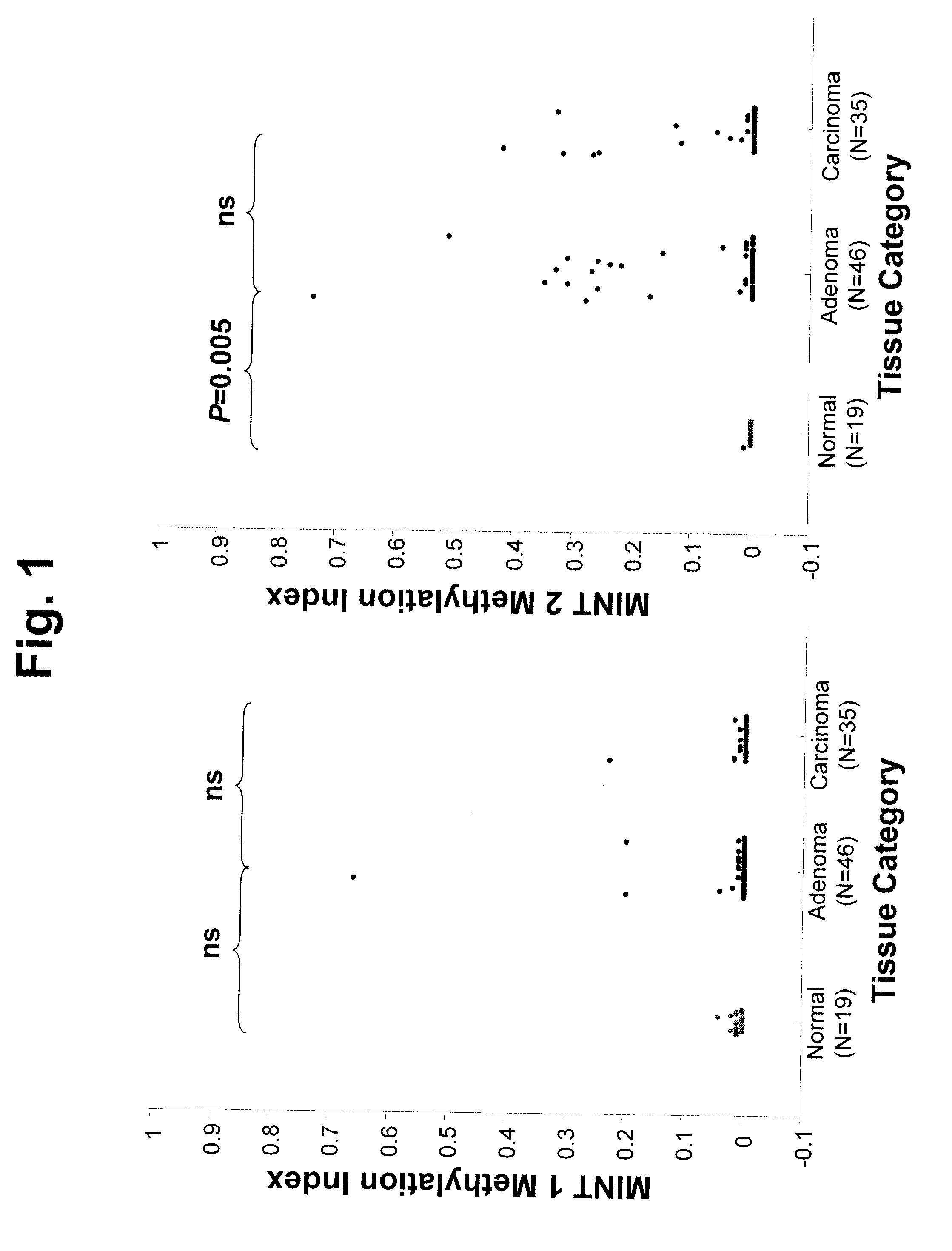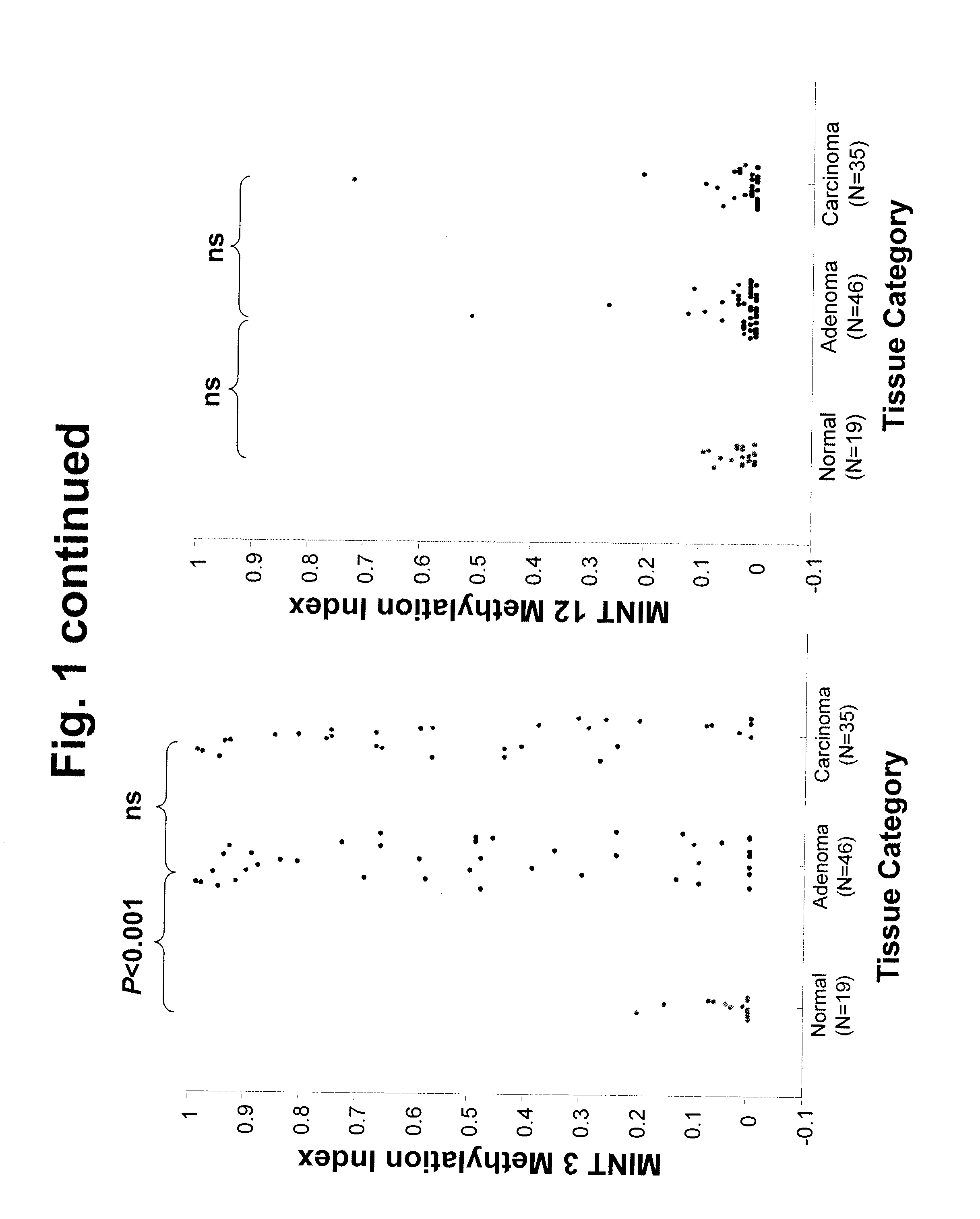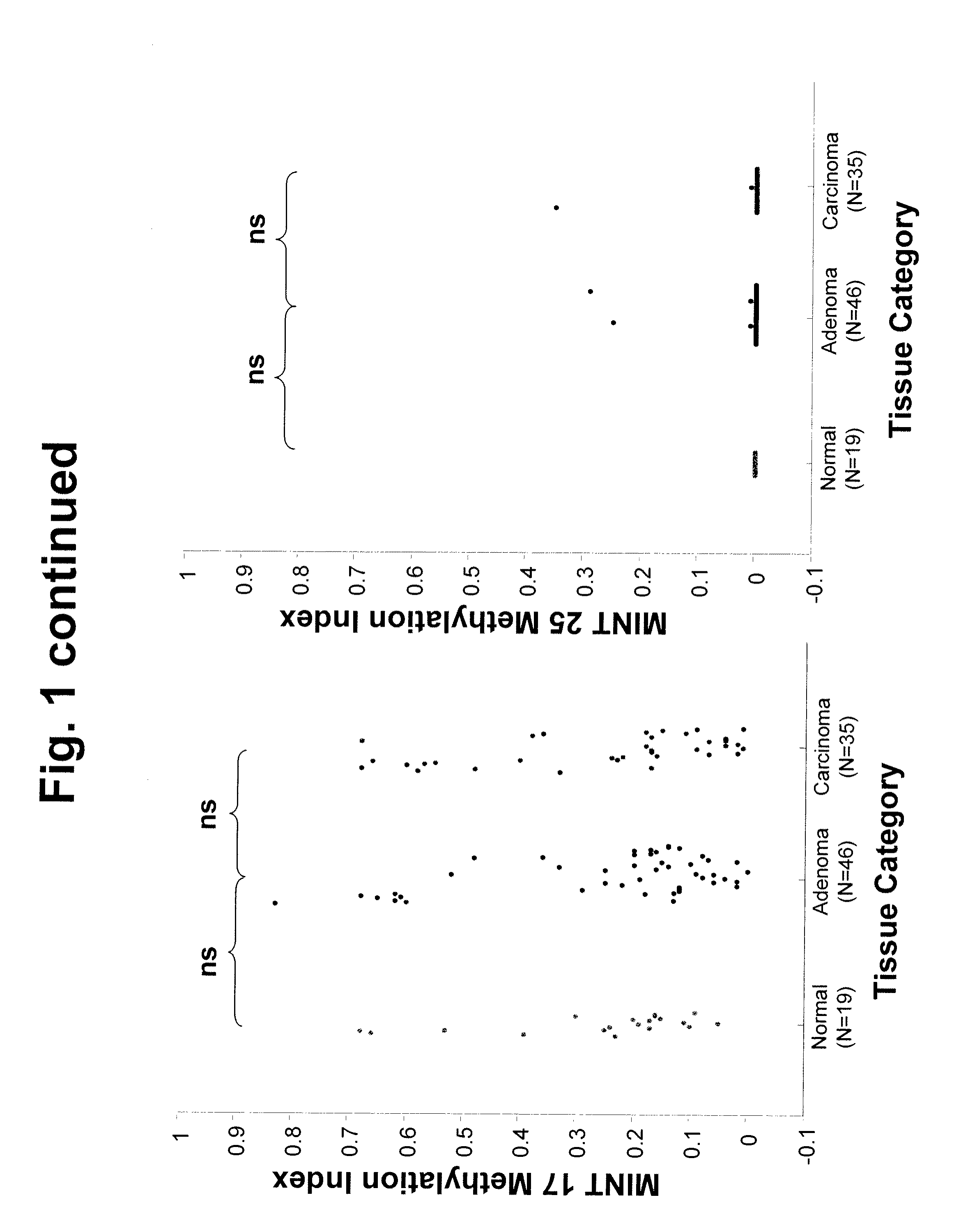Use of Methylation Status of MINT Loci as a Marker for Rectal Cancer
a rectal cancer and locus technology, applied in the field of mint loci as rectal cancer markers, to achieve the effects of shortening overall survival, increasing risk, and shortening cancer-specific survival
- Summary
- Abstract
- Description
- Claims
- Application Information
AI Technical Summary
Benefits of technology
Problems solved by technology
Method used
Image
Examples
example i
Quantitative Analysis of Methylation of Genomic Loci in Early Stage Rectal Cancer Predicts Distant Recurrence
Abstract
[0064]Introduction: There are no accurate prognostic biomarkers specific for rectal cancer. Epigenetic aberrations, in the form of DNA methylation, accumulate early during rectal tumor formation. In a preliminary study, we investigated absolute quantitative methylation changes associated with tumor progression of rectal tissue at multiple genomic methylated-in-tumor (MINT) loci sequences. We then explored in a different clinical patient group whether these epigenetic changes could be correlated with clinical outcome. Methods: Absolute quantitative assessment of methylated alleles (AQAMA) was used to assay methylation changes at MINT 1, 2, 3, 12, 17, 25, and 31 in sets of normal, adenomatous and malignant tissues from 46 patients with rectal cancer. Methylation levels of these biomarkers were then assessed in operative specimens of 251 patients who underwent total mes...
example ii
Identification of a Quantitative MINT Locus Methylation Profile Predicting Local Recurrence of Rectal Cancer
Abstract
[0137]Purpose: In preoperative treatment planning for patients undergoing primary tumor resection for rectal cancer, the major clinical problem is who will be at high risk for loco-regional disease recurrence. Epigenetic aberrations such as DNA methylation have been shown to be significant prognostic biomarkers of disease outcome. In this study the significance of a quantitative epigenetic multi-marker panel analysis of primary tumors to predict local recurrence in rectal cancer patients from a multicenter phase III clinical trial was evaluated. Methods: Methylation levels of seven methylated-in-tumor (MINT) loci were assessed by absolute quantitative assessment of methylated alleles (AQAMA) in primary tumors from patients that underwent total mesorectal excision (TME) for primary rectal cancer (n=251). Unsupervised random forest clustering of quantitative MINT methyl...
PUM
| Property | Measurement | Unit |
|---|---|---|
| expectation maximization mixture of Gaussians | aaaaa | aaaaa |
| MI | aaaaa | aaaaa |
| gel electrophoresis | aaaaa | aaaaa |
Abstract
Description
Claims
Application Information
 Login to View More
Login to View More - R&D
- Intellectual Property
- Life Sciences
- Materials
- Tech Scout
- Unparalleled Data Quality
- Higher Quality Content
- 60% Fewer Hallucinations
Browse by: Latest US Patents, China's latest patents, Technical Efficacy Thesaurus, Application Domain, Technology Topic, Popular Technical Reports.
© 2025 PatSnap. All rights reserved.Legal|Privacy policy|Modern Slavery Act Transparency Statement|Sitemap|About US| Contact US: help@patsnap.com



